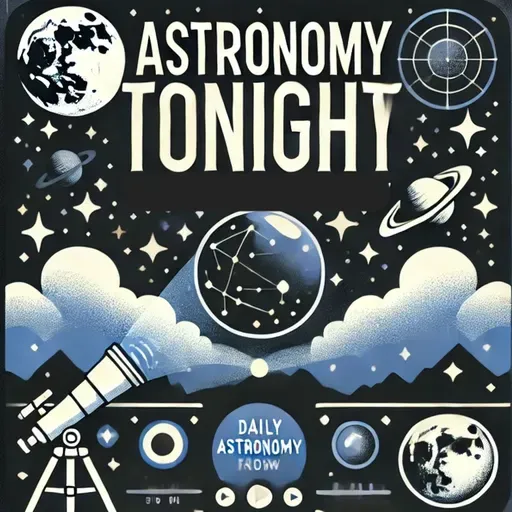
About
This is your Astronomy Tonight podcast.
On this day, September 2nd, in the year 1859, something extraordinary happened that would change our understanding of the Sun and its influence on Earth forever. Picture this: it's a typical late summer day, and amateur astronomer Richard Carrington is in his private observatory in England, sketching sunspots. Suddenly, he witnesses an intense burst of white light erupting from the Sun's surface. Little did he know, he had just observed the most powerful solar flare ever recorded in human history.
This event, now known as the Carrington Event, unleashed a massive coronal mass ejection that reached Earth in just 17 hours and 40 minutes - a journey that typically takes several days. The resulting geomagnetic storm was so intense that it caused telegraph systems worldwide to fail, with some operators reporting sparks flying from their equipment and papers catching fire!
But the real spectacle came at night when the aurora borealis, typically only visible in polar regions, was seen as far south as Cuba and Hawaii. Imagine the awe and confusion of people in those tropical paradises as the night sky erupted in a dazzling display of reds, greens, and purples!
The Carrington Event remains the largest recorded geomagnetic storm in history. If a similar event were to occur today, it could potentially cause trillions of dollars in damage to our modern electrical and communication infrastructure. It's a stark reminder of the raw power of our seemingly benign Sun and the importance of space weather monitoring.
So, the next time you look up at the Sun (with proper eye protection, of course), remember the day when it gave us the most spectacular light show in recorded history and nearly set the world's telegraph systems ablaze!
If you enjoyed this cosmic tidbit, don't forget to subscribe to the Astronomy Tonight podcast for more fascinating stories from the cosmos. And if you're hungry for more mind-expanding content, check out QuietPlease.AI. Thank you for listening to another Quiet Please Production. Keep looking up, space fans!
On this day, September 2nd, in the year 1859, something extraordinary happened that would change our understanding of the Sun and its influence on Earth forever. Picture this: it's a typical late summer day, and amateur astronomer Richard Carrington is in his private observatory in England, sketching sunspots. Suddenly, he witnesses an intense burst of white light erupting from the Sun's surface. Little did he know, he had just observed the most powerful solar flare ever recorded in human history.
This event, now known as the Carrington Event, unleashed a massive coronal mass ejection that reached Earth in just 17 hours and 40 minutes - a journey that typically takes several days. The resulting geomagnetic storm was so intense that it caused telegraph systems worldwide to fail, with some operators reporting sparks flying from their equipment and papers catching fire!
But the real spectacle came at night when the aurora borealis, typically only visible in polar regions, was seen as far south as Cuba and Hawaii. Imagine the awe and confusion of people in those tropical paradises as the night sky erupted in a dazzling display of reds, greens, and purples!
The Carrington Event remains the largest recorded geomagnetic storm in history. If a similar event were to occur today, it could potentially cause trillions of dollars in damage to our modern electrical and communication infrastructure. It's a stark reminder of the raw power of our seemingly benign Sun and the importance of space weather monitoring.
So, the next time you look up at the Sun (with proper eye protection, of course), remember the day when it gave us the most spectacular light show in recorded history and nearly set the world's telegraph systems ablaze!
If you enjoyed this cosmic tidbit, don't forget to subscribe to the Astronomy Tonight podcast for more fascinating stories from the cosmos. And if you're hungry for more mind-expanding content, check out QuietPlease.AI. Thank you for listening to another Quiet Please Production. Keep looking up, space fans!